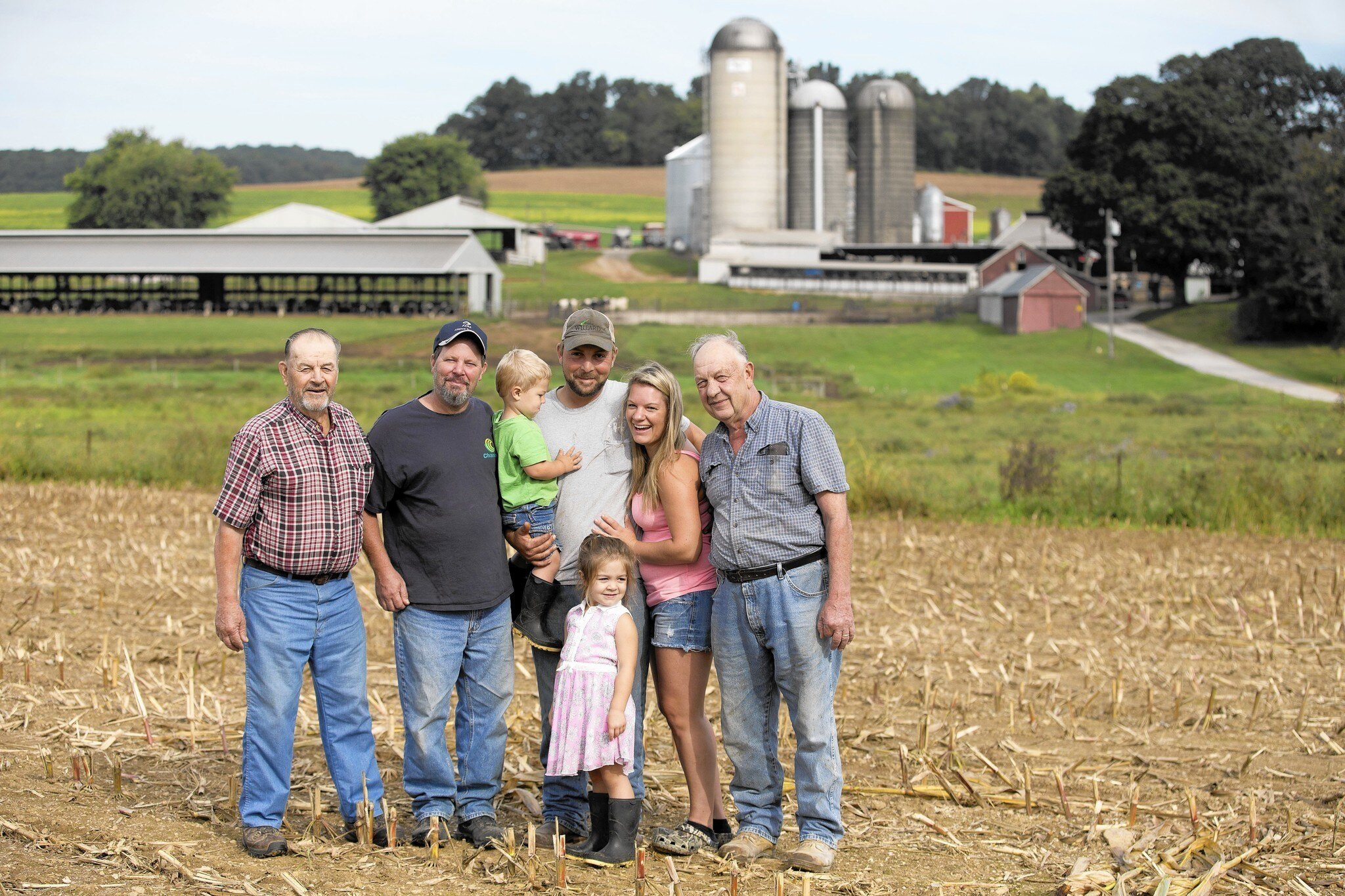About 6% of U.S. dairy farms quit milking cows in 2022, but that was a slower rate of decline than...
Nearly All U.S. Farms Are Family Farms

AgWeb’s Margy Eckelkamp reported recently that “family farms still dominate a majority of U.S. farms,” having accounted “for about 96% of total farms and 83% of total production in 2023” in the United States.
Released on December 10, the USDA’s Economic Research Service published its 2024 edition of America’s Farms and Ranches at a Glance. This publication, which pulls from survey data collected at the end of 2023, aims to give a snapshot of the U.S. farm economy. A big part of the study breaks down different characteristics of farms by type. The first differentiation is between family farms and non-family farms. Per the USDA, a family farm is a farm in which the majority of the business is owned by an operator and/or any individual related by blood, marriage, or adoption, including relatives who do not live in the operator’s household.
The study found that most U.S. farms (86%) are small family farms (GCFI less than $350,000); these farms operate on 41% of U.S. agricultural land and account for 17% of the total value of production. Large-scale family farms (GCFI of $1,000,000 or more) accounted for 48% of the total value of production and 31% of agricultural land in 2023.

Large-scale family farms accounted for the majority of the value of cash grains and soybeans (52%), cotton (71%), dairy (77%), and specialty crops (59%) production. Small family farms produced 45% of the value of hay and 46% of the total value of U.S. poultry and egg output. Twenty-two percent of the value of beef production occurred on small family farms, while 39% occurred on large-scale family farms. Small family farms often have cow-calf operations, while large-scale family farms are more likely to operate feedlots.
When it comes to government payment programs, the percentage of farms receiving government payments ranged from 21% for small family farms to 44% for midsize and large family farms.
Small family farms received 76% of all payments from USDA’s Conservation Reserve Program (CRP). Midsized and large-scale family farms accounted for 66% of the total value of production and received 71% of countercyclical-type payments, which include Agricultural Risk Coverage (ARC) and Price Loss Coverage (PLC) and 61% of all other payments, which include Dairy Margin Coverage, agricultural disaster, and ad-hoc payments.
Majority of Large Operations Use Precision Agriculture
Successful Farming’s Chuck Abbott reported that “some 68% of large crop farms use precision agriculture technology that generates information that aids decision-making by operators, such as yield monitors, yield maps, and soil maps.” The annual Farms and Ranches at a Glance report showed higher-volume farms are heavy users of the technology, notwithstanding earlier reports showing a low usage rate by farmers nationwide.
Large operators said they adopted precision agriculture (PA) technology to increase yields, reduce input costs, and reduce operator fatigue. By contrast, few small farms employed the technology. According to USDA’s Economic Research Service, adoption increases with farm size primarily because larger farms can benefit more from employing these tools than smaller farms.
Last year, the USDA reported 27% of crop and livestock farms used at least one form of PA, from yield monitors and drones to robotic milking, an increase of 2 percentage points in two years. The equipment has been available since the 1990s but often is expensive. PA allows row-crop farmers to track production from relatively small plots, rather than by field, and adjust the amounts of seed, fertilizer, and other inputs accordingly.
EDITOR’S TAKE:
These results are not surprising. As far back as the data has been gathered, family farms have been the vast majority of operations in the U.S. While large farms account for a larger and larger proportion of total farm output, it is important to remember that smaller farms remain an integral component of American agriculture. This data also flies in the face of the accusations that farming has been taken over by corporate farms. Of course, there are corporate farms that operate in the U.S., but rest assured family farming is alive and well. And, yes, larger family farms often operate differently than smaller ones, but smaller farms are very important to the well-being of many rural towns and villages across the country. All farms purchase trucks. In fact, according to the research we often quote, nearly a million trucks are purchased every year. Be sure you continue to focus your marketing efforts to all farms/ranches in your area. Make sure your inventory is up-to-date on AgTruckTrader.com®!








